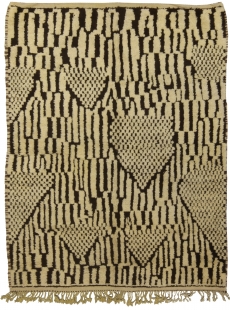 Cotton, which grows in tropical and subtropical areas, comes from the family of Malva plants. Today, the word cotton pertains to cotton hair itself. (The hairy covering of the seeds of the cotton plant) The plant is mostly grown in countries that manufacture carpets. Cotton is used in the construction of a wide variety of rugs. These categories include and are not limited to flat-weave, hand-knotted, and Moroccan style rugs. A popular technique, known as mercerizing, is used in the preparation of cotton to make it shinier, thus embodying the quality of silk. Most cotton rugs have a pile made of mercerized cotton which make them look like they are made entirely of silk because of the silk-like structure and elegance that they exhibit.
Cotton, which grows in tropical and subtropical areas, comes from the family of Malva plants. Today, the word cotton pertains to cotton hair itself. (The hairy covering of the seeds of the cotton plant) The plant is mostly grown in countries that manufacture carpets. Cotton is used in the construction of a wide variety of rugs. These categories include and are not limited to flat-weave, hand-knotted, and Moroccan style rugs. A popular technique, known as mercerizing, is used in the preparation of cotton to make it shinier, thus embodying the quality of silk. Most cotton rugs have a pile made of mercerized cotton which make them look like they are made entirely of silk because of the silk-like structure and elegance that they exhibit.
Carpets made of cotton originate from various parts of the world, the most popular of which are those that are manufactured in India and Morocco. Indian cotton rugs come in all shapes and sizes but are generally of the same pattern design, the only difference being the color. Most of these rugs are characterized by a combination of blue and white stripes or red and white stripes, although some of them are also designed to be monotone or of a lighter or darker shade. Most of these rugs also feature floral and leaf designs, which captures the exuberance of Indian culture.
Moroccan cotton rugs usually exhibit tightly knotted cotton weaves.
They also contain animal or floral designs and feature large central areas with decorative woven medallions. Made from the ingenious hands of artisans, these cotton rugs are marked for their intricate patterns and bright colors.
Today, cotton rugs are some of the most widely distributed carpets in the world. There are top-quality cotton carpets known to suit different tastes and styles. The exquisite design and skillful craftsmanship of these rugs, along with a wide range of hand-knotted textures, colors, and patterns, make them highly desirable, not only locally, but also to carpet buyers from different parts of the globe.